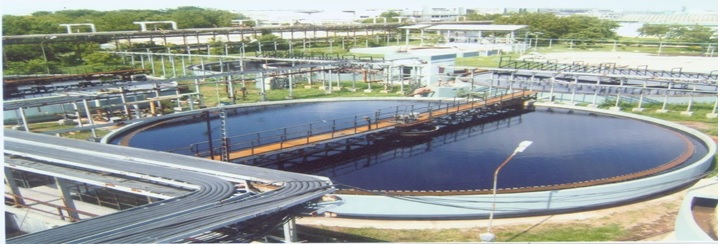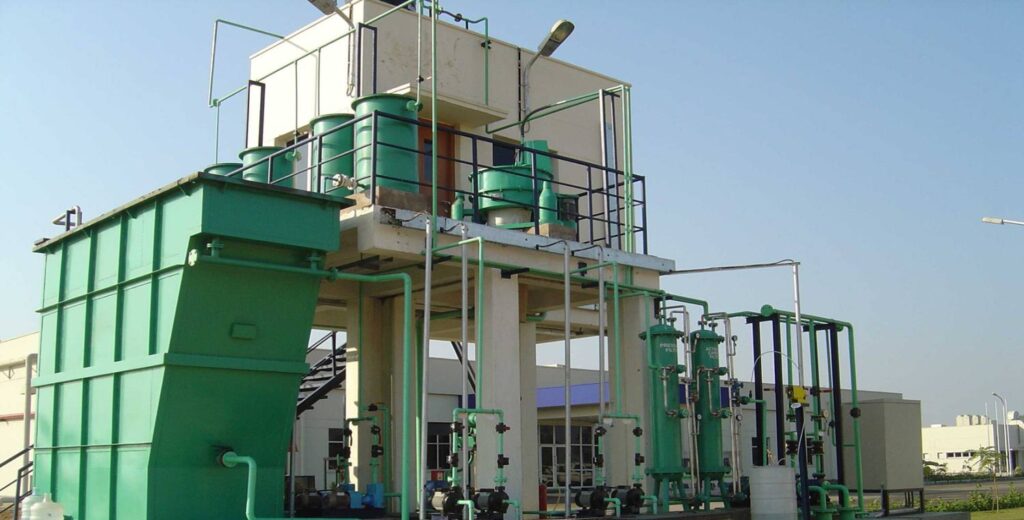WASTE WATER TREATMENT
1. STP (Sewage Treatment Plant)
Sewage Treatment Plant or simply STP is a highly demanded product amongst others in ENVIRO ESSENTIALS company is providing repairs and maintenance services in all over India at an affordable price and through the expert and efficient engineers. Sewage treatment is performed to clean the waste water underlying in land. his waste water is the result of domestic and commercial disposals, rain water etc. Thus, sewage treatment is performed to remove the majority of the contaminants lying in waste water and to produce the smooth flow of liquid which should be environment friendly. Apart from this, it helps in keeping the environment clean.

Technologies Used In Sewage Treatment System
MBBR technology employs thousands of polyethylene biofilm carriers operating in mixed motion within an aerated waste water treatment basin. It is this high-density population of bacteria that achieves high- rate biodegradation within the system, while also offering process reliability and ease of operation. This technology provides cost-effective treatment with minimal maintenance since MBBR processes self- maintain an optimum level of productive biofilm. Additionally, the biofilm attached to the mobile biocarriers within the system automatically responds to load fluctuations.
The term ‘membrane bioreactor (MBR) is generally used to define waste water treatment processes where a perm-selective membrane like microfiltration or ultrafiltration is integrated with a biological process – suspended growth bioreactor. MBR is, in fact, one of the most important innovations in waste water treatment, as it overcomes the drawbacks of the conventional ASP, including large space requirement for secondary clarifiers, liquid-solid separation issues, production of excess sludge, and limitations with removal of recalcitrant
Sequencing batch reactors or SBRs use a separate pre-treatment section to mechanically hold back solids and a biological aeration and settling tank. Small SBR wastewater treatment systems clean incoming wastewater over a number of cycles. The wastewater goes first into primary treatment (1st chamber), where the solid substances are retained. From there, the wastewater is fed into the SBR tank (2nd chamber). The actual biological cleaning by microorganisms now takes place in the SBR tank. Short aeration and rest phases alternate in acontrolled cleaning process.
2. ETP (Effluent Treatment Plant)
Nowadays effluent has gained a wider coverage as it includes almost every waste that pour into our water and air. Liquid factory waste, smoke, and raw sewage can all be called effluents. Effluent Treat plants are another form of waste water treatment plants which are designed and manufactured specially for treating water that contains effluents and works towards making the water effluent-free. Using an Effluent treatment plant, we convert wastewater – which is no longer needed or suitable for its most recent use – into effluent that can be either returned to the water cycle with minimal environmental issues or reused.
If an industry has a right to use water then it becomes their duty to make it clean or re-usable. Industries consumed clean water and in outcome they generate polluted water which includes harmful chemicals such as oils, grease, solids etc. water produced through the industrial process is called effluent. Our duty is to clean the pollutants through the effective water treatment methods. So, plants are established for this process and these plants are called “Effluent Treatment plants”. As the name suggest, it involves removing the pollutants under the Water to make it usable for another process and then to make the environment pollution free.
WORKING PROCESS OF ETP

COMBINED EFFLUENT TREATMENT PLANTS (C-ETP)
CETP’s are set up in the industrial estates where there are clusters of small scale industrial units and where many polluting industries are located. Many of the Small Scale Industries (SSI) are unable to install the individual treatment systems. Hence, the concept of CETP’s (Common Effluent Treatment Plants) is envisaged to benefit such industries in treating its effluent before disposal whether it is in stream, land, sewerage system or in rivers and seas.The Ministry of Environment & amp; Forest, Government of India has launched a centrally sponsored scheme, namely, Common Effluent Treatment Plant (CETP) in order to make a co-operative movement of pollution control especially to treat the effluent, emanating from group of compatible Small-Scale Industries. The CETP therefore, reduces the treatment cost to be borne by an individual member unit while protecting the water environment to a maximum.

Request a Customized Quote
To receive a quotation, please provide us with some information about your specific requirements. This will allow us to tailor a solution that meets your unique needs and budget.
